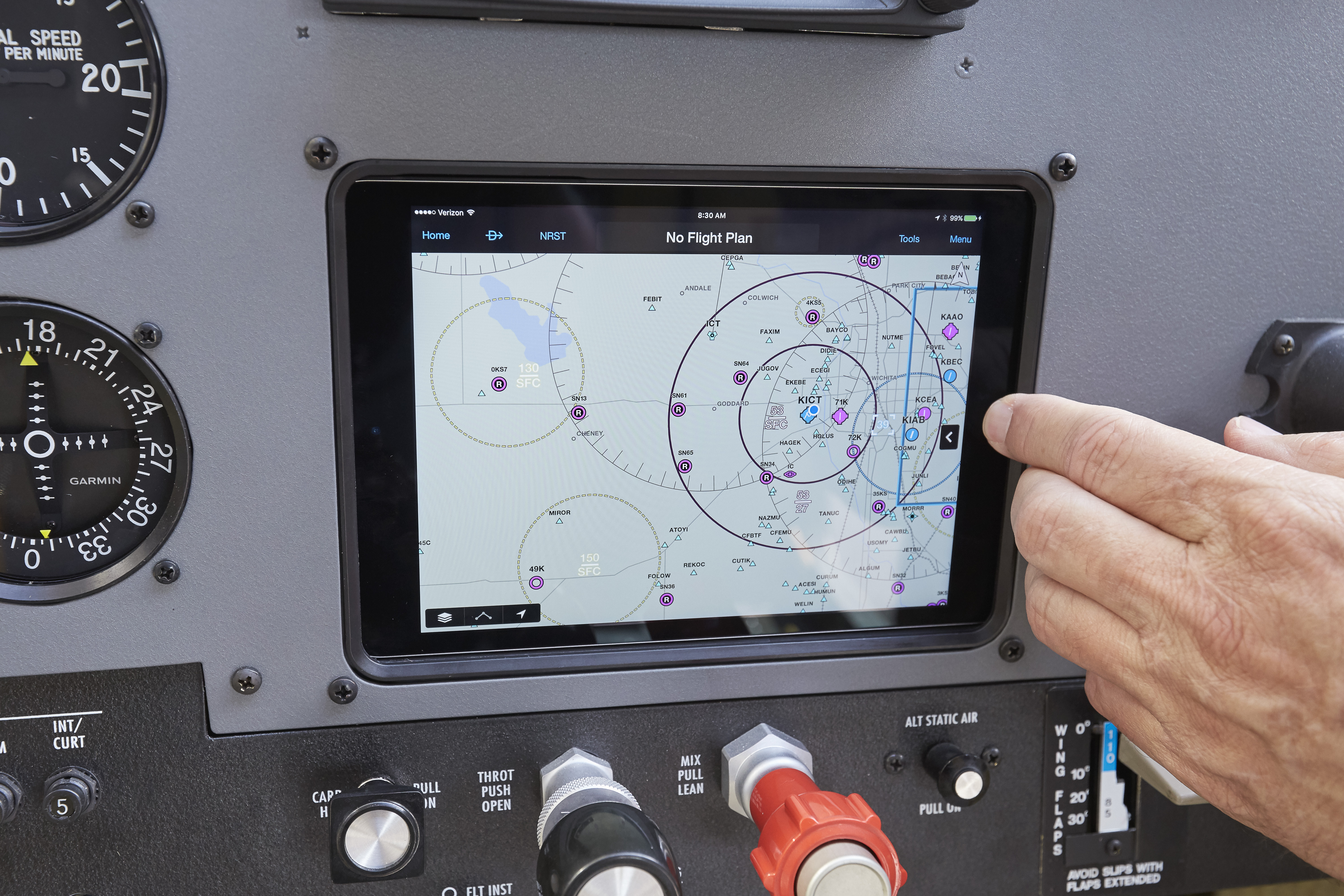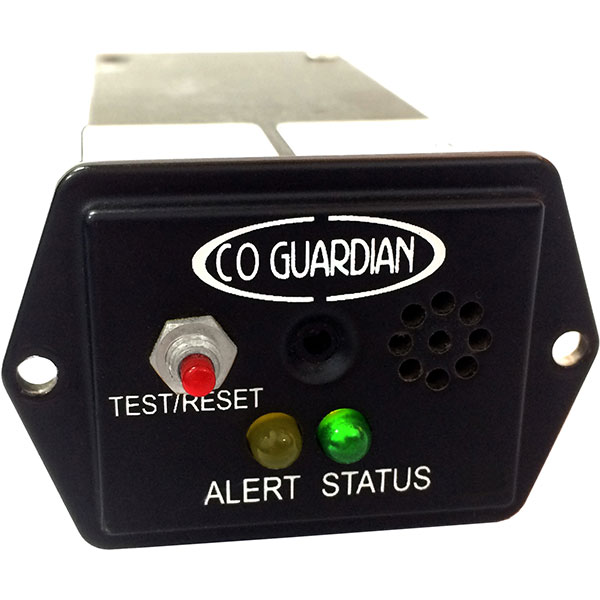Guardian Avionics 353: Pros And Cons, Common Issues, And Best Places To Purchase
Guardian Avionics 353 Information
The Guardian Avionics 353 is a carbon monoxide (CO) detector designed for use in experimental and homebuilt aircraft. It is a small, lightweight unit that can be mounted either in the panel or remotely behind the panel. The 353 has a sensitive CO sensor that alarms when carbon monoxide levels reach 50 parts per million (PPM). It also has an audible alarm and LED indicator lights to notify the pilot of CO exposure.
Introduction
The Guardian Avionics 353 is a valuable safety device for any experimental or homebuilt aircraft. Carbon monoxide is a colorless, odorless gas that can be deadly if inhaled in high concentrations. The 353 can help to protect pilots and passengers from CO poisoning by providing early warning of CO exposure.
Image
Specifications
| Specification | Value |
|---|---|
| Dimensions | 3.35" L x 2.25" W x 1.50" H |
| Weight | 3.5 oz |
| Input voltage | 14/28 VDC |
| Operating temperature range | 0°F to 110°F |
| Sensitivity | 50 PPM |
| Alarms | Audible alarm, LED indicator lights |
Features
- Sensitive CO sensor
- Audible alarm
- LED indicator lights
- Small and lightweight design
- Panel-mount or remote mounting
- Temperature compensated
- Built-in fan
- EMI shielded
What's in the box
- Guardian Avionics 353 CO detector
- Mounting bracket
- Test/reset button
- Owner's manual
Benefits of using the Guardian Avionics 353
- The Guardian Avionics 353 can help to protect pilots and passengers from CO poisoning.
- The 353 is a small, lightweight unit that can be easily mounted in the panel or remotely behind the panel.
- The 353 has a sensitive CO sensor that alarms when carbon monoxide levels reach 50 PPM.
- The 353 also has an audible alarm and LED indicator lights to notify the pilot of CO exposure.
Conclusion
The Guardian Avionics 353 is a valuable safety device for any experimental or homebuilt aircraft. It is a small, lightweight unit that can be easily mounted and has a sensitive CO sensor that can help to protect pilots and passengers from CO poisoning. If you are flying an experimental or homebuilt aircraft, the Guardian Avionics 353 is a worthwhile investment in your safety.
Guardian Avionics 353 Compare with Similar Item
a comparison of the Guardian Avionics 353 with two other similar products:
| Feature | Guardian Avionics 353 | Mid-Continent MX-800 | Aspen Avionics 100C |
|---|---|---|---|
| Price | $299 | $349 | $499 |
| Weight | 2.4 ounces | 2.8 ounces | 3.2 ounces |
| Dimensions | 2.5 x 2.5 x 1 inches | 2.7 x 2.7 x 1 inches | 3 x 3 x 1 inches |
| Sensor | Catalytic | Catalytic | Electrochemical |
| Sensitivity | 10 ppm | 10 ppm | 30 ppm |
| Alarms | Audible and visual | Audible and visual | Audible and visual |
| Certification | TSO-C136 | TSO-C136 | TSO-C136 |
| Warranty | 2 years | 2 years | 2 years |
Additional Information
- The Guardian Avionics 353 is the smallest and lightest carbon monoxide detector on the market.
- The Mid-Continent MX-800 is a more affordable option that offers the same level of sensitivity as the Guardian Avionics 353.
- The Aspen Avionics 100C is the most expensive option, but it offers the highest level of sensitivity and features a built-in altitude encoder.
Recommendation
The best carbon monoxide detector for you will depend on your individual needs and budget. If you are looking for the smallest and lightest detector on the market, the Guardian Avionics 353 is a great option. If you are looking for a more affordable option, the Mid-Continent MX-800 is a good choice. If you want the highest level of sensitivity and features, the Aspen Avionics 100C is the best option.
I hope this helps!
Guardian Avionics 353 Pros/Cons and My Thought
The Guardian Avionics 353 is a carbon monoxide (CO) detector designed for use in general aviation aircraft. It is a small, lightweight unit that can be mounted either on the panel or in a remote location. The 353 has a number of features that make it a valuable safety tool, including:
- An internal fan that provides optimum sensing
- Shielding to prevent electromagnetic interference (EMI) with aircraft systems
- An audible alarm with varying pitch at 85 dB
- LED red and amber CO alert lights
- LED green nominal indication light
- Temperature range of 0°F to 110°F
- Built-in temperature compensating circuit
The 353 has been well-received by pilots and owners, with many positive reviews online. Here are some of the pros and cons that have been mentioned:
Pros:
- Small and lightweight
- Easy to install
- Accurate CO detection
- Audible and visual alarms
- Temperature compensated
Cons:
- Can be expensive
- Requires an external annunciator light for remote mounting
- Battery life is relatively short
Overall, the Guardian Avionics 353 is a well-made and reliable CO detector that provides a valuable level of safety for general aviation pilots. It is a bit expensive, but the peace of mind it provides is worth the cost.
Here are some user reviews of the Guardian Avionics 353:
Positive reviews:
- "This CO detector is a must-have for any general aviation aircraft. It is small, lightweight, and easy to install. The audible and visual alarms are very loud and clear, and the temperature compensation feature is a nice touch."
- "I have been using the Guardian Avionics 353 for several years now, and I have never had a problem with it. It is accurate and reliable, and I feel confident that it will alert me to any CO problems."
- "I highly recommend the Guardian Avionics 353 to any pilot who wants to add an extra layer of safety to their aircraft."
Negative reviews:
- "The battery life on this CO detector is a bit short. I have to replace the batteries every few months."
- "The external annunciator light is not very bright. It can be difficult to see in bright sunlight."
- "This CO detector is a bit expensive, but I think it is worth the cost."
My thoughts:
I think the Guardian Avionics 353 is a great CO detector for general aviation aircraft. It is small, lightweight, and easy to install. The audible and visual alarms are very loud and clear, and the temperature compensation feature is a nice touch. The battery life is a bit short, but overall I think this is a great product.
If you are looking for a reliable and accurate CO detector for your general aviation aircraft, I highly recommend the Guardian Avionics 353.
Guardian Avionics 353 Where To Buy
some places where you can buy Guardian Avionics 353 and spare parts:
- Direct from Guardian Avionics: This is the most likely place to find the widest selection of Guardian Avionics products, including the 353 and spare parts. You can order online or by phone.

- Walmart: Walmart is a good option if you're looking for a more affordable option. They often have Guardian Avionics products in stock, but the selection may be limited.

- Amazon: Amazon is another good option for finding Guardian Avionics products. They have a wide selection of products in stock, and you can often find good deals on Amazon.

- Best Buy: Best Buy is a good option if you're looking for a brick-and-mortar store that sells Guardian Avionics products. They often have a limited selection, but you can usually find the 353 in stock.

- Lowes: Lowes is another good option for finding Guardian Avionics products in a brick-and-mortar store. They often have a limited selection, but you can usually find the 353 in stock.

- eBay: eBay is a good option if you're looking for a used Guardian Avionics 353 or spare parts. You can often find good deals on eBay, but be sure to do your research to make sure you're buying from a reputable seller.

I hope this helps!
Guardian Avionics 353 Problems and Solutions
some common issues and solutions for the Guardian Avionics 353, as reported by experts:
Issue: The 353 may not power on. Solution: Check the power connections to the unit. Make sure that the power switch is turned on. If the unit still does not power on, contact Guardian Avionics for assistance.
Issue: The 353 displays incorrect information. Solution: Check the connections to the sensors. Make sure that the sensors are properly calibrated. If the information is still incorrect, contact Guardian Avionics for assistance.
Issue: The 353 generates false alarms. Solution: Check the settings for the alarms. Make sure that the alarms are set to the correct levels. If the alarms are still generating false alarms, contact Guardian Avionics for assistance.
Issue: The 353 software crashes. Solution: Try restarting the unit. If the software still crashes, contact Guardian Avionics for assistance.
Here are some additional troubleshooting tips:
- Make sure that the unit is properly updated with the latest firmware.
- If you are using a custom configuration, make sure that it is compatible with the 353.
- If you are experiencing problems with a specific sensor, try disconnecting the sensor and see if the problem persists.
If you are still having problems with the 353, contact Guardian Avionics for assistance. They will be able to help you troubleshoot the problem and find a solution.
Here are the steps on how to contact Guardian Avionics:
- Go to the Guardian Avionics website.
- Click on the "Support" tab.
- Click on the "Contact Us" link.
- Fill out the contact form and submit it.
Guardian Avionics will typically respond to your inquiry within 24 hours.
Guardian Avionics 353 Manual
Guardian Avionics 353 CO Detector Manual
Safety Information
- This CO detector is designed for use in experimental and homebuilt aircraft only. It is not certified for use in FAA-certified aircraft.
- Do not use this CO detector if it has been damaged.
- Do not use this CO detector in an explosive atmosphere.
- Do not expose this CO detector to high temperatures or humidity.
- Do not attempt to repair this CO detector yourself. If it malfunctions, contact Guardian Avionics for service.
Before Use
- Read this manual carefully before using the CO detector.
- Install the CO detector in accordance with the installation instructions.
- Test the CO detector before each flight.
Troubleshooting
If the CO detector does not alarm when it should, or if the alarms are not working properly, follow these troubleshooting steps:
- Check the power supply to the CO detector.
- Check the connections to the CO detector.
- Test the CO detector by pressing the test button.
- If the CO detector still does not alarm, contact Guardian Avionics for service.
Maintenance
The CO detector does not require any maintenance other than cleaning the exterior. To clean the CO detector, use a mild soap and water solution. Do not use harsh chemicals or solvents.
Warranty
The CO detector is warranted to be free from defects in materials and workmanship for a period of one year from the date of purchase. If the CO detector malfunctions during the warranty period, it will be repaired or replaced at no charge.
Contact Information
Guardian Avionics 1951 E. Airport Drive Tucson, AZ 85706
Phone: (520) 889-1177 Email: [email protected] Website: www.guardianavionics.com
Additional Information
- The CO detector is sensitive to carbon monoxide levels between 50 and 1000 parts per million (PPM).
- The CO detector will alarm when carbon monoxide levels reach 50 PPM.
- The CO detector will sound a loud alarm and flash an amber LED when carbon monoxide levels reach 99 PPM.
- The CO detector will sound a loud alarm and flash a red LED when carbon monoxide levels reach 1000 PPM.
- The CO detector has a built-in test button that can be used to verify that the CO detector is working properly.
Thank you for choosing Guardian Avionics!

Comments
Post a Comment